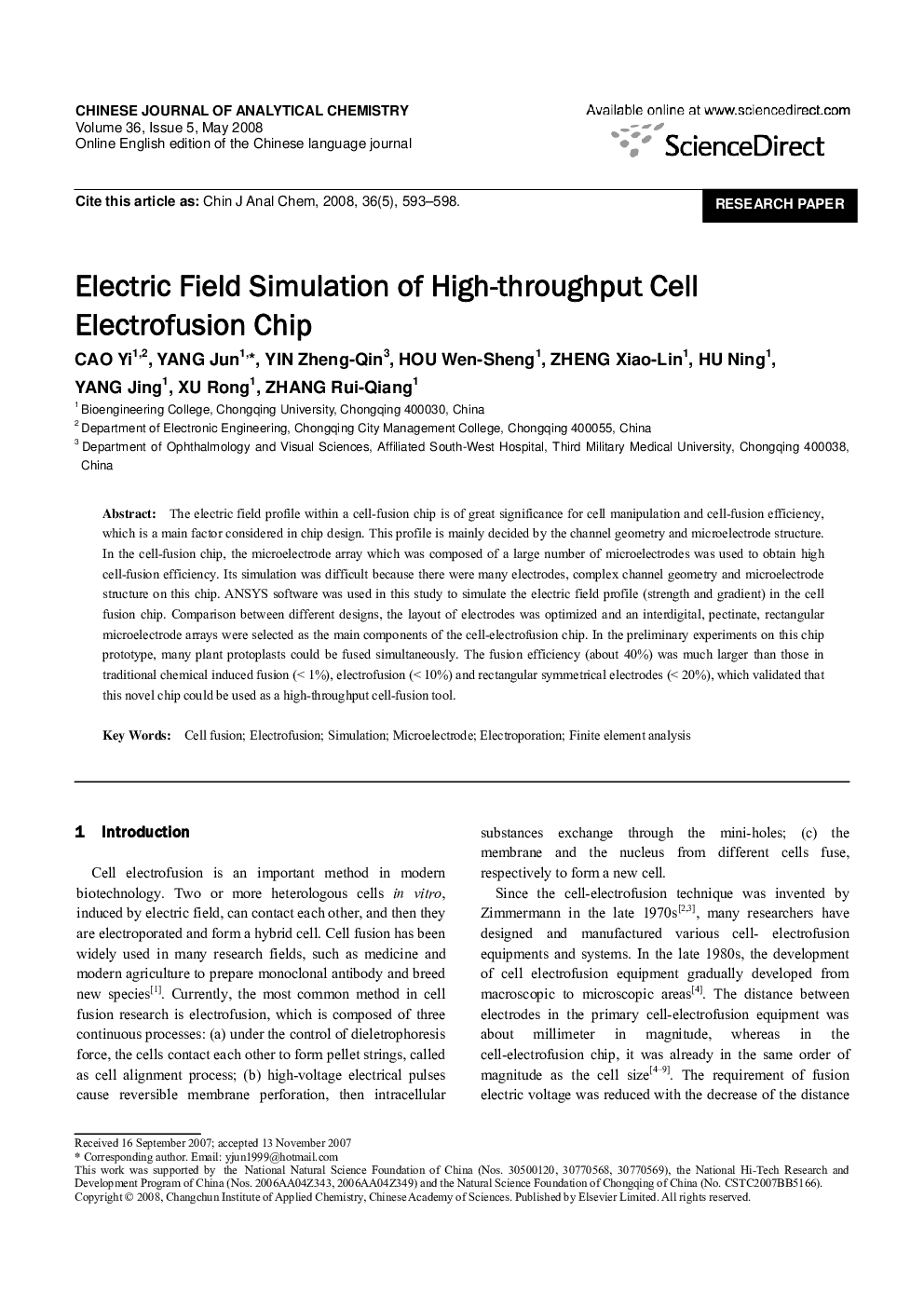| کد مقاله | کد نشریه | سال انتشار | مقاله انگلیسی | نسخه تمام متن |
|---|---|---|---|---|
| 1182225 | 1491709 | 2008 | 6 صفحه PDF | دانلود رایگان |

The electric field profile within a cell-fusion chip is of great significance for cell manipulation and cell-fusion efficiency, which is a main factor considered in chip design. This profile is mainly decided by the channel geometry and microelectrode structure. In the cell-fusion chip, the microelectrode array which was composed of a large number of microelectrodes was used to obtain high cell-fusion efficiency. Its simulation was difficult because there were many electrodes, complex channel geometry and microelectrode structure on this chip. ANSYS software was used in this study to simulate the electric field profile (strength and gradient) in the cell fusion chip. Comparison between different designs, the layout of electrodes was optimized and an interdigital, pectinate, rectangular microelectrode arrays were selected as the main components of the cell-electrofusion chip. In the preliminary experiments on this chip prototype, many plant protoplasts could be fused simultaneously. The fusion efficiency (about 40%) was much larger than those in traditional chemical induced fusion (< 1%), electrofusion (< 10%) and rectangular symmetrical electrodes (< 20%), which validated that this novel chip could be used as a high-throughput cell-fusion tool.
Journal: Chinese Journal of Analytical Chemistry - Volume 36, Issue 5, May 2008, Pages 593-598